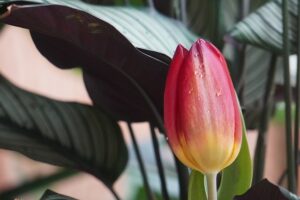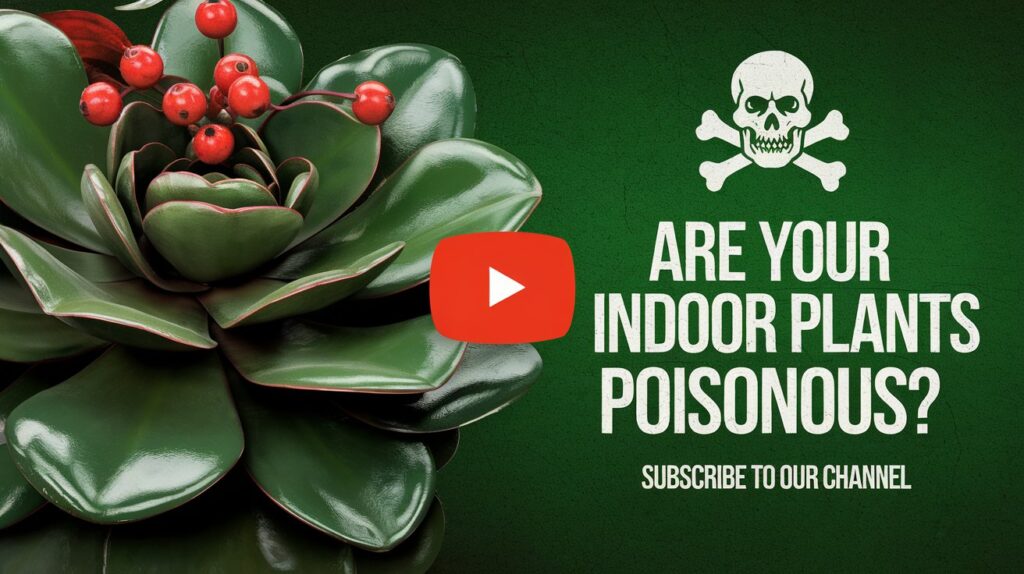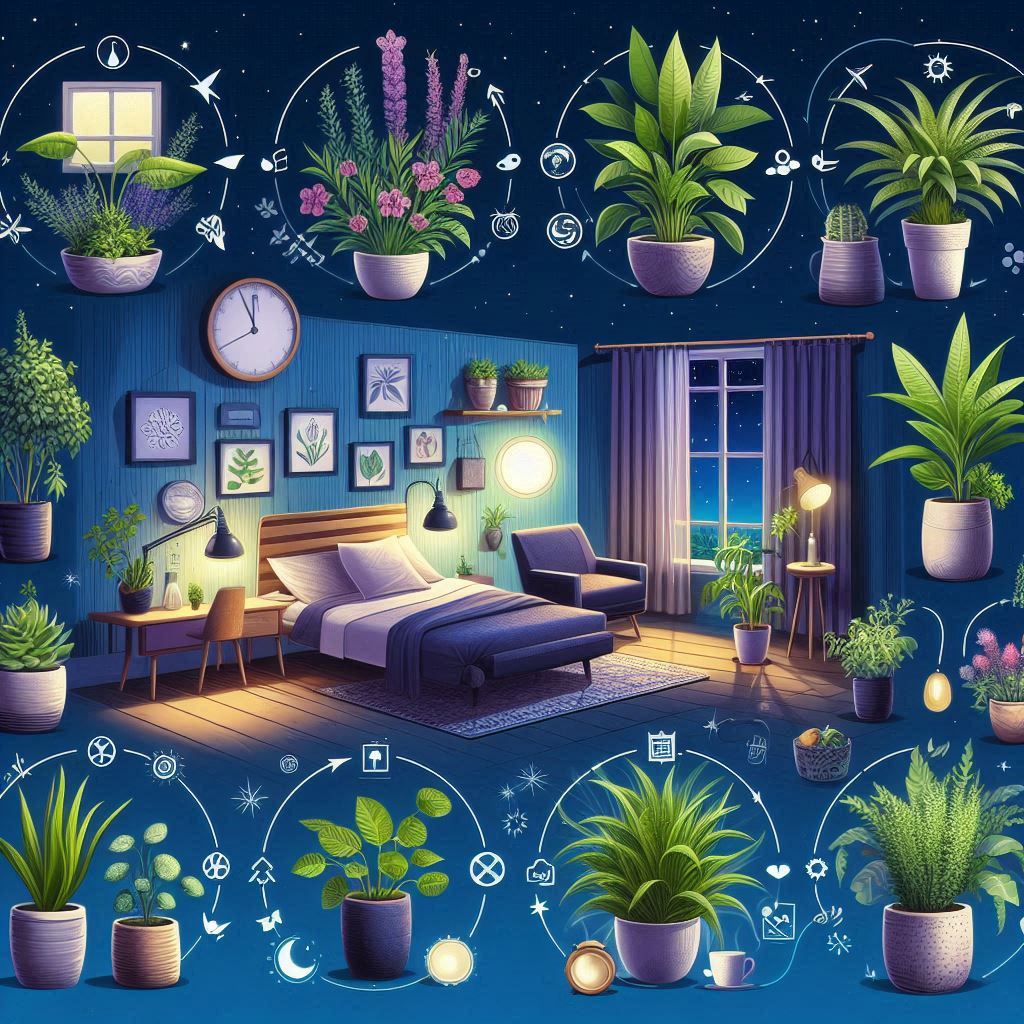Introduction;
Why the Topic Matters:
Indoor plants are not only a popular choice for home decor but also offer numerous benefits, such as improving air quality, boosting mood, and creating a calming environment. However, many indoor plants contain toxic compounds that can pose serious health risks to humans and pets if ingested or mishandled. With millions of households welcoming plants into their living spaces, understanding which plants are safe and which are hazardous is crucial for maintaining a healthy and secure home.
For pet owners, in particular, the topic becomes even more important, as curious cats, dogs, or other animals may be tempted to chew on leaves, stems, or flowers. Even small amounts of exposure can cause harmful reactions, from digestive discomfort to life-threatening situations. Similarly, young children might be drawn to touching or tasting plant parts, which can lead to accidental poisoning.
Discussing the topic of poisonous indoor plants helps raise awareness about the potential dangers, offers guidance on safe plant choices, and provides practical tips on how to enjoy indoor greenery without compromising the safety of your household.
Common Concerns About Indoor Plants and Safety
When bringing plants into the home, people often have several concerns regarding their safety, especially if they live with pets or young children. Below are some of the most frequent worries:
- Toxicity to Pets and Children
Many popular indoor plants can be poisonous if touched, ingested, or inhaled. Pets, especially cats and dogs, may chew on leaves or flowers, potentially ingesting toxic substances. Small children might also explore their environment by putting things in their mouths, which could result in accidental poisoning. - Allergic Reactions
Some plants can trigger allergic reactions in sensitive individuals. These reactions may include skin irritation from sap or oils, respiratory issues from pollen, or eye discomfort from plant particles. This concern is especially important for individuals with pre-existing allergies or asthma. - Poisonous Sap and Oils
Some indoor plants excrete sap or oils that can be toxic upon contact. For example, the sap from the Dieffenbachia plant can cause skin irritation, and accidental eye exposure may lead to more serious reactions, such as swelling or pain. Handling these plants without gloves can pose risks. - Airborne Irritants
While many plants are praised for purifying the air, some can release airborne irritants that may affect indoor air quality. Certain plants can emit volatile organic compounds (VOCs) or cause issues through mold and fungi growth in damp soil, aggravating respiratory issues for sensitive individuals. - Poisoning Symptoms Going Unnoticed
One of the biggest concerns is the delayed recognition of poisoning symptoms in humans and animals. Pets and children often cannot communicate discomfort immediately, leading to potentially severe outcomes if toxic exposure goes unnoticed. - Plant Placement and Accessibility
Even if a plant is known to be toxic, it’s common to wonder if simply having it in the home is a danger. A key concern is whether placing plants in hard-to-reach areas or using barriers is enough to protect vulnerable family members. - Emergency Situations
Knowing what to do in case of accidental ingestion or exposure is a common worry. Many people are unsure of what steps to take in case of poisoning or whether they need to seek medical attention immediately.
Understanding Plant Toxicity;
What Makes a Plant Poisonous?:
A plant is considered poisonous when it contains chemicals or compounds that can cause harm to humans, pets, or other animals when ingested, touched, or inhaled. The degree of toxicity varies between plants, with some causing mild irritation and others leading to severe or even life-threatening reactions. Several factors contribute to a plant’s toxicity, and understanding them helps in identifying potentially dangerous species. Here are some key factors that make a plant poisonous:
- Toxic Compounds
Many plants contain natural chemicals that serve as a defense mechanism against predators. These compounds can be toxic to humans and animals, and they include:- Alkaloids: Found in plants like philodendron and dieffenbachia, alkaloids can cause symptoms ranging from mild irritation to nausea, vomiting, or even cardiac issues.
- Glycosides: These compounds, such as those in oleander, can affect the heart, leading to abnormal heart rhythms and even death if ingested in significant amounts.
- Calcium Oxalate Crystals: Found in plants like peace lilies and pothos, these needle-like crystals can cause intense pain and irritation when ingested or touched, affecting the mouth, throat, and stomach.
- Saponins: These compounds, found in plants like snake plants, can cause nausea, vomiting, and diarrhea when ingested by humans or pets.
- Plant Parts
Not all parts of a plant may be poisonous, but certain areas can harbor toxic substances. Common poisonous parts include:- Leaves: Many plants store toxins in their leaves, which can be harmful if chewed or ingested by pets or children.
- Flowers: In some species, the flowers may be toxic if ingested, such as in the case of oleander or lilies.
- Stems and Roots: Toxicity may also reside in a plant’s stems or roots, as seen in plants like the peace lily or philodendron.
- Berries and Seeds: The bright colors of berries can be tempting to children and pets, but plants like mistletoe or holly have poisonous berries. Seeds of certain plants, like the castor bean plant, can be extremely toxic.
- Mode of Exposure
The way in which a person or animal comes into contact with the plant can affect the level of danger. Common modes of exposure include:- Ingestion: Eating leaves, berries, or other parts of a toxic plant is the most common way poisoning occurs.
- Skin Contact: Some plants secrete oils or sap that can cause skin irritation or allergic reactions upon contact, such as with poison ivy.
- Inhalation: In rare cases, plant particles or pollen can be inhaled, leading to respiratory issues or allergic reactions, especially in sensitive individuals.
- Concentration of Toxins
The toxicity of a plant depends on the concentration of poisonous substances within it. In some plants, only large amounts of ingestion may cause harm, while in others, even a small amount can lead to severe symptoms. For example, ingesting a single seed from the castor bean plant can be fatal, whereas larger amounts of a less toxic plant might be needed to cause significant harm. - Impact on Specific Species
Toxicity varies not only by plant but also by the species exposed to it. Some plants that are safe for humans can be dangerous for animals. For instance, lilies are extremely toxic to cats but may pose little risk to humans. Similarly, certain plants toxic to dogs might not affect humans in the same way. - Environmental Factors
Growing conditions, such as soil type and climate, can influence the toxicity of certain plants. In some cases, plants grown in particular environments may develop higher concentrations of toxic substances due to stress, pests, or other environmental factors.
Common Toxic Compounds in Plants:
Many indoor plants contain natural toxic compounds that can cause harmful reactions in humans and animals. These compounds serve various roles in plants, such as defense mechanisms against herbivores and insects, but they can pose risks to households with pets, children, or sensitive individuals. Below are some of the most common toxic compounds found in plants:
- Alkaloids
- Examples: Philodendron, Dieffenbachia, Lupine, Aconite
- Effects: Alkaloids are naturally occurring chemical compounds that can affect the nervous system and disrupt normal physiological functions. Symptoms may include nausea, vomiting, dizziness, difficulty breathing, and in severe cases, paralysis or death. Ingesting alkaloids can also cause irritations in the mouth and throat.
- Calcium Oxalate Crystals
- Examples: Peace Lily, Pothos, Philodendron, Dieffenbachia (Dumb Cane)
- Effects: These tiny, needle-like crystals are found in plant tissues and can cause intense pain and irritation if ingested or touched. When chewed or ingested, they can result in severe burning and swelling of the mouth, tongue, and throat, leading to difficulty swallowing and breathing. Contact with the skin can also cause irritation.
- Glycosides
- Examples: Oleander, Lily of the Valley, Foxglove
- Effects: Glycosides, particularly cardiac glycosides, are toxic compounds that affect heart function. Ingestion can lead to symptoms such as irregular heart rhythms, dizziness, nausea, vomiting, and, in severe cases, heart failure or death. These plants are especially dangerous because even small amounts can be fatal.
- Saponins
- Examples: Snake Plant, Yucca, Jade Plant
- Effects: Saponins are soap-like compounds found in various plants that can cause gastrointestinal distress when ingested. They can lead to symptoms such as nausea, vomiting, diarrhea, and abdominal pain. While rarely fatal, saponins can still cause discomfort, particularly in pets and small children.
- Terpenoids
- Examples: Ivy, Juniper, Marigolds
- Effects: Terpenoids are a large class of organic chemicals that give plants their scent and flavor. While beneficial in small amounts, terpenoids can be toxic if ingested in large quantities, leading to nausea, vomiting, and stomach pain. Some terpenoids are also irritants to the skin and can cause allergic reactions upon contact.
- Phenols
- Examples: Anemones, Peppers, Cacti
- Effects: Phenolic compounds can cause irritation of the skin and mucous membranes. Ingesting phenols can lead to burning sensations in the mouth, vomiting, and diarrhea. They may also cause respiratory issues if inhaled in large amounts.
- Toxalbumins (Lectins)
- Examples: Castor Bean, Rosary Pea
- Effects: Toxalbumins are highly toxic proteins found in certain plants. They inhibit protein synthesis in cells, which can cause severe poisoning. Ingesting even a small amount of these plants can result in symptoms such as nausea, vomiting, diarrhea, severe abdominal pain, and in extreme cases, organ failure or death.
- Solanine
- Examples: Nightshade, Tomato Plants (in leaves and stems)
- Effects: Solanine is a toxic alkaloid found in plants from the nightshade family. Ingesting solanine can cause nausea, vomiting, diarrhea, headaches, and in severe cases, neurological symptoms such as confusion, drowsiness, or hallucinations.
- Cyanogenic Glycosides
- Examples: Cassava, Hydrangea, Almond (Bitter Almond), Apple Seeds
- Effects: When ingested, cyanogenic glycosides break down into hydrogen cyanide, a highly toxic substance that can interfere with cellular respiration. Symptoms of cyanide poisoning include headache, nausea, difficulty breathing, weakness, and in severe cases, seizures, coma, or death.
- Resins
- Examples: Pine Trees, Spruce, Fir
- Effects: Resins are sticky substances that can cause allergic reactions in some people, particularly skin irritation and rashes. If ingested, resins can cause nausea, vomiting, and stomach discomfort.
- Amino Acids (Amino Acid Derivatives)
- Examples: Some species of legumes, such as Lathyrus (Sweet Pea)
- Effects: Certain amino acids in plants can cause neurotoxicity, leading to symptoms such as muscle weakness, paralysis, and respiratory failure when ingested in large amounts over time.
- Oxalates
- Examples: Rhubarb (leaves), Spinach (in large quantities), Parsley
- Effects: Oxalates can bind with calcium in the body, leading to kidney stones or other kidney-related issues. Ingesting high amounts of oxalates can cause nausea, vomiting, and irritation of the digestive system.
Common Poisonous Indoor Plants;
For households with pets, children, or anyone concerned about the safety of indoor plants, opting for non-toxic varieties is a great way to add greenery without the worry of poisoning. Below is a list of popular non-toxic indoor plants that are safe for humans and pets.
1. Spider Plant (Chlorophytum comosum)
- Appearance: Long, arching green and white-striped leaves.
- Benefits: Besides being non-toxic, spider plants are known for their air-purifying abilities and easy care.
- Care: Thrives in indirect light and moderate watering.

2. Boston Fern (Nephrolepis exaltata)
- Appearance: Graceful, feathery fronds that grow in a fountain-like shape.
- Benefits: This classic indoor fern is non-toxic and helps to improve indoor air quality.
- Care: Prefers high humidity, indirect light, and consistent watering.

3. Areca Palm (Dypsis lutescens)
- Appearance: A tropical plant with soft, feathery fronds.
- Benefits: The Areca Palm is non-toxic and an excellent air purifier, making it a safe choice for homes with pets and children.
- Care: Prefers bright, indirect light and needs regular watering.

4. Bamboo Palm (Chamaedorea seifrizii)
- Appearance: Clusters of slender stems topped with delicate, fan-like fronds.
- Benefits: Safe for pets and children, and great for purifying the air.
- Care: Thrives in low light conditions and requires consistent watering.

5. Calathea (Calathea spp.)
- Appearance: Known for their striking, patterned leaves in shades of green, purple, and red.
- Benefits: Calatheas are non-toxic and pet-friendly, offering vibrant colors and patterns.
- Care: Needs high humidity, indirect light, and regular watering.

6. Baby Rubber Plant (Peperomia obtusifolia)
- Appearance: Small, thick, oval-shaped leaves that are shiny and bright green.
- Benefits: Safe for both humans and pets, this plant adds greenery and is easy to care for.
- Care: Grows well in moderate light and only needs occasional watering.

7. African Violet (Saintpaulia)
- Appearance: Small, soft, velvety leaves with delicate purple, pink, or white flowers.
- Benefits: This non-toxic plant is safe for pets and children, while also adding colorful blooms to indoor spaces.
- Care: Prefers bright, indirect light and consistent moisture.

8. Parlor Palm (Chamaedorea elegans)
- Appearance: Graceful, arching fronds that give a tropical look.
- Benefits: Parlor palms are non-toxic and ideal for improving air quality. They are also low-maintenance and adaptable.
- Care: Grows well in low light and only requires occasional watering.

9. Prayer Plant (Maranta leuconeura)
- Appearance: Striking leaves with bold green, red, or purple patterns. Known for folding its leaves at night like praying hands.
- Benefits: Safe for pets and children, this unique plant is a great choice for homes seeking low-risk plants.
- Care: Prefers indirect light and humid conditions, with regular watering.

10. Ponytail Palm (Beaucarnea recurvata)
- Appearance: A small, bulbous trunk with thin, cascading leaves that resemble a ponytail.
- Benefits: A unique, non-toxic plant that is safe for all members of the household, including pets.
- Care: Thrives in bright, indirect light and needs minimal watering, as it stores water in its trunk.

11. Hoya (Hoya spp.)
- Appearance: Also known as the wax plant, Hoyas have thick, waxy leaves and star-shaped flowers.
- Benefits: Hoya plants are non-toxic and make great additions to any indoor space with their beautiful, trailing vines.
- Care: Prefers bright, indirect light and only needs watering when the soil dries out.

12. Christmas Cactus (Schlumbergera spp.)
- Appearance: Flat, segmented leaves with brightly colored flowers that bloom around the holidays.
- Benefits: Safe for pets and children, this plant is also a festive addition to indoor decor.
- Care: Likes bright, indirect light and moderate watering, especially during the blooming season.

13. Pilea (Pilea peperomioides)
- Appearance: Often referred to as the “Chinese money plant,” it has rounded, coin-shaped leaves on long stems.
- Benefits: A non-toxic, pet-friendly plant that is easy to propagate and care for.
- Care: Thrives in bright, indirect light and requires regular watering, but can tolerate occasional droughts.

14. Cast Iron Plant (Aspidistra elatior)
- Appearance: Long, dark green, sword-like leaves.
- Benefits: Non-toxic and incredibly resilient, the cast iron plant is nearly indestructible and perfect for low-maintenance homes.
- Care: Grows well in low light and needs minimal watering.

15. Echeveria (Echeveria spp.)
- Appearance: Rosette-shaped succulent with fleshy, colorful leaves.
- Benefits: Safe for pets and children, this drought-tolerant succulent is perfect for low-maintenance plant enthusiasts.
- Care: Needs bright light and occasional watering, especially when the soil dries out.

How to Safely Manage Toxic Indoor Plants
If you enjoy having plants in your home but some of your favorites are toxic, it’s essential to take certain precautions to ensure the safety of your household. Here are best practices for safely keeping poisonous indoor plants:
1. Place Plants Out of Reach
- Elevated Locations: Position toxic plants in high or hard-to-reach places, such as on shelves, hanging planters, or tall plant stands. This helps prevent accidental ingestion by children or pets.
- Secure Wall Mounts: Use secure wall-mounted planters to ensure plants stay out of reach of curious pets or toddlers who might knock them over.
2. Use Barriers
- Pet Barriers: Install baby gates or pet barriers in rooms where you keep toxic plants. This restricts access to pets or young children.
- Glass or Mesh Covers: Consider placing small, toxic plants in glass or mesh covers or terrariums to prevent direct contact while maintaining their aesthetic.
3. Label Plants Clearly
- Identification Tags: Place identification tags or labels on or near toxic plants so that all household members, visitors, or caregivers are aware of the plant’s potential risks.
- Educational Materials: Teach children or other household members about the risks of toxic plants and ensure they know not to touch or ingest them.
4. Routine Plant Care and Maintenance
- Prune Regularly: Prune toxic plants regularly to remove any fallen leaves or dead branches. This minimizes the risk of toxic plant parts being accidentally ingested or handled.
- Clean Up Immediately: Clean up any debris or fallen leaves promptly, as pets or children might find and try to chew on them.
- Avoid Overwatering: Overwatering toxic plants can cause mold or root rot, which could increase the spread of toxic sap or compounds. Stick to a balanced watering schedule based on the plant’s needs.
5. Monitor Pets and Children
- Supervision: Keep an eye on pets and young children when they are in areas where toxic plants are present. If they seem overly curious about a particular plant, consider moving it or adding additional barriers.
- Behavior Training for Pets: Train pets, especially dogs and cats, to avoid chewing on plants. Positive reinforcement and deterrents like bitter sprays can help discourage this behavior.
6. Choose Pet- and Child-Safe Alternatives
- Fake Plants: Consider using realistic-looking artificial plants in areas frequented by pets or children. They can offer the same aesthetic without the risks associated with real toxic plants.
- Rotate Plants: You can alternate between non-toxic and toxic plants in your home depending on seasonal use or changes in access, especially during times when children or pets are more likely to interact with them.
7. Wear Gloves When Handling Plants
- Protect Your Skin: When handling, pruning, or repotting toxic plants, always wear gloves to prevent skin irritation or accidental ingestion of toxic sap.
- Eye Protection: For plants that can cause eye irritation, such as Dieffenbachia, consider wearing safety goggles or glasses to prevent sap from coming into contact with your eyes.
8. Educate Visitors and Caregivers
- Communicate Plant Safety: If you have frequent visitors, house sitters, or babysitters, inform them about the toxic plants in your home and share guidelines for keeping themselves and their pets or children safe.
- Temporary Plant Relocation: If visitors have pets or young children, temporarily relocating toxic plants to a less accessible area during their stay can provide peace of mind.
9. Store Plant Care Products Safely
- Toxic Pesticides and Fertilizers: If you’re using chemicals like pesticides or fertilizers, ensure they are stored securely and away from children or pets, as these products can also pose health risks.
- Choose Non-Toxic Alternatives: Opt for non-toxic or organic plant care products that minimize additional risks for those handling the plants.
10. Know What to Do in Case of Poisoning
- Keep Emergency Numbers Handy: Save the number of your local poison control center and veterinarian for quick access. Know the symptoms of plant poisoning in both humans and pets.
- Be Prepared for Emergencies: If a plant is ingested, act quickly. Remove plant material from the mouth, rinse the mouth, and seek medical attention if symptoms like vomiting, difficulty breathing, or swelling occur.
- Bring Plant Information: In the case of poisoning, having the plant name or a sample handy can help medical professionals provide the best treatment.
Conclusion
Indoor plants can add beauty, tranquility, and air purification to any home, but some come with potential risks due to their toxic properties. Understanding which plants are poisonous and following best practices for keeping them safely can help you enjoy the benefits of greenery without putting your household in danger. From careful placement and monitoring to educating family members and visitors, taking precautions is essential when toxic plants are present. By staying informed and prepared, you can maintain a safe, plant-filled home that harmonizes both aesthetics and safety, ensuring peace of mind for everyone, including pets and children.




